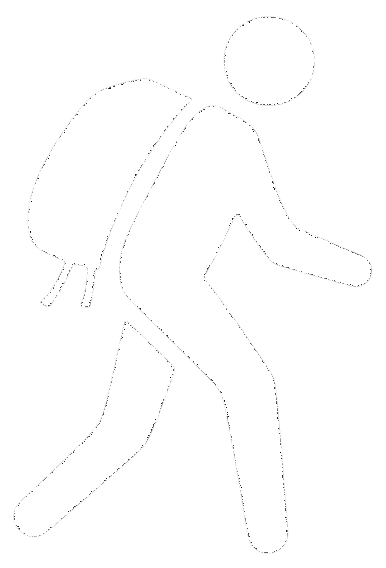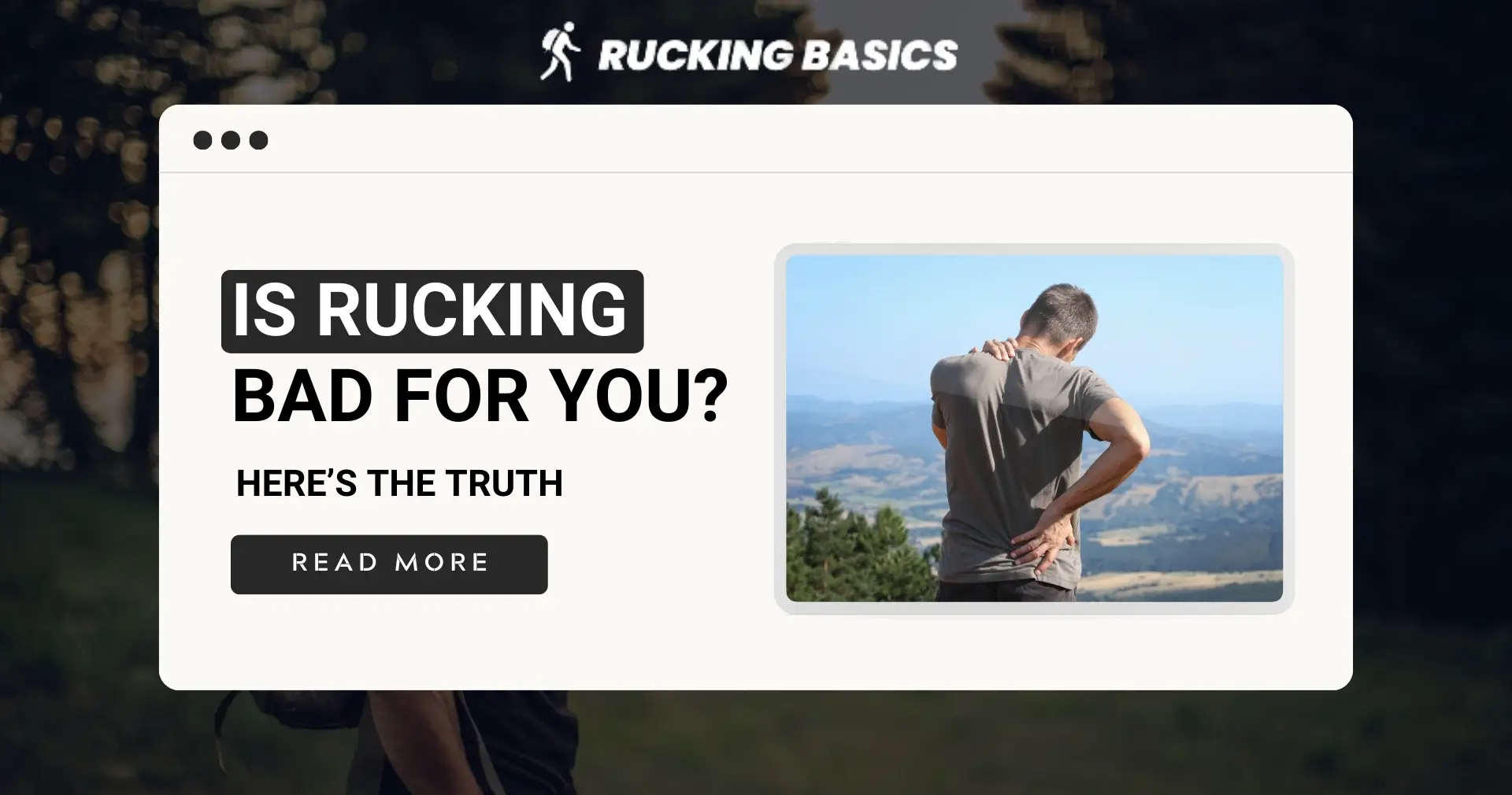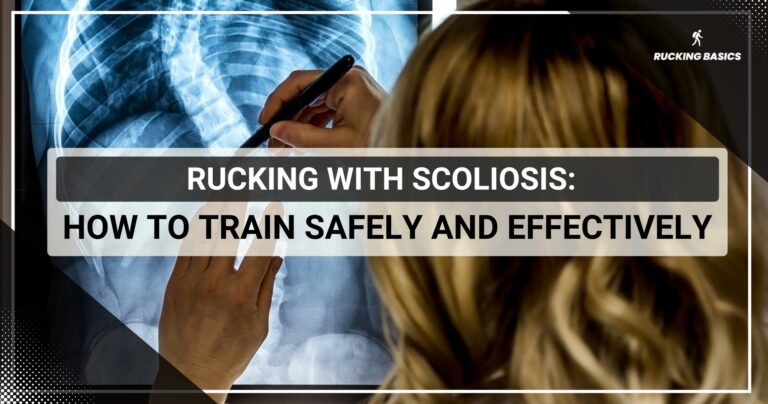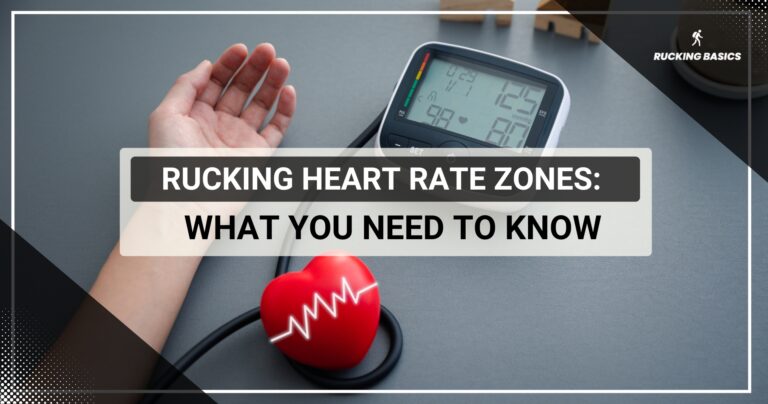You put on a rucksack, load it with weight, and walk. It’s a natural progression from hiking or walking but with the added benefit of resistance training. I’ve been rucking for a while now, and I can confidently say it’s one of the best ways to combine cardio and strength without needing a gym membership or fancy equipment.
Why do I believe that? It works almost every muscle in your body, and prolonged exercise improves the cardiovascular system.
However, as with any fitness trend, there are concerns about whether rucking is safe or if it poses risks to your body. If you’re new to rucking, or even if you’ve been doing it for a while, you may have wondered, “Is rucking bad for you?”
The short answer: No, rucking isn’t bad for you—when done properly, it’s actually incredibly beneficial.
I know many of you won’t just take my word for granted, so I’m going to break down all the concerns, dispel some myths, and show you why rucking is amazing.
Is Rucking Bad for You?
Absolutely not! Let’s put that to bed once and for all. It’s a safe, low-impact way to improve your overall strength and cardiovascular fitness.
Compared to high-impact activities like running, rucking puts far less strain on your joints while still offering a full-body workout. The great thing about rucking is that you can tailor it to your fitness level by adjusting the rucking weight and the pace you set.
Common Concerns About Rucking
I’m rather sure that all of you who are hesitant to try rucking have heard of at least one of these potential problems. Like everything, rucking can lead to injury or similar issues, but let me explain why these concerns shouldn’t hold you back from rucking.
Impact on Joints
Are you worried that rucking might put too much stress on your knees, hips, and other joints? It’s understandable to think that carrying extra weight could lead to problems. Nevertheless, the stress rucking puts on your joints is much less intense than running, jumping, or lifting weights.
In fact, it can strengthen the muscles around your joints, improving joint stability and resilience over time. If you have hip or knee pain, start with lighter weights and gradually increase them.
For those new to the activity, learning how to start rucking properly can make all the difference in preventing strain and making progress safely.
Risk of Injury
As with any physical activity, rucking does come with some risk of injury, but most of these risks can be easily avoided. The most common injuries include blisters, muscle strains, and occasional lower back pain. We can all agree that these are generally minor issues and can be prevented.
Injuries often occur when people go too heavy, too fast, or neglect their form. To minimize your risk, start with a manageable weight, about 10-15% of your body weight. Remember, rucking is an endurance activity, not a sprint, so there’s no need to rush.
Muscular Fatigue
It’s totally natural to experience some muscular fatigue, especially when you’re new to it. Don’t let this fatigue concern you; you are not overtrained, and you did not cause muscle damage (at least in 99% of cases). That’s simply part of your body’s normal adaptation process when it’s building strength.
Surely, you don’t want your first ruck to be a 15-mile-long ruck march that will keep you in bed for the next ten days. Shorter distances and lighter weights are the way to make your rucking start easy and seamless, plus give yourself time to recover between rucks.
Cardiovascular Concerns
Some people worry that the rucking session might be too intense for their cardiovascular system. In reality, rucking provides a perfect cardio workout without pushing your heart rate to dangerously high levels. Unlike sprinting or high-intensity interval training (HIIT), rucking keeps you in a steady, moderate heart rate zone.
If you’re concerned about potential risks, it’s helpful to learn if rucking might be causing back problems. For example, check out our article on rucking with a herniated disc to learn about ways to keep your back safe and healthy while rucking.
For those with specific conditions like rucking with scoliosis, adjustments in posture and weight distribution can make a big difference. Taking proactive steps to address these issues will help you ruck safely and avoid long-term discomfort.
Foot and Ankle Pain
Foot and ankle pain can be a common issue for those new to rucking, but it’s often the result of improper footwear or carrying more weight than your body is ready for.
Choosing the right shoes is crucial—footwear designed for long-distance walking or hiking will provide the support and cushioning you need to avoid discomfort. You can check our selection of the best rucking shoes.
Dehydration and Overexertion in Heat
There is no doubt that rucking in hot weather is challenging, with dehydration and heat exhaustion being realistic concerns. Carrying extra weight in extreme temperatures can lead to faster dehydration or overheating, especially if you’re not adequately prepared.
Yet, these risks are so easy to avoid, right? First, don’t go rucking when it’s too hot or cold because the cold brings another set of potential problems.
If you decide to still go outside, slow your pace in high heat and choose early mornings or late afternoons when the temperatures are cooler. Also, always carry plenty of water in your hydration bladder and drink regularly, even if you don’t feel thirsty.
The Benefits of Rucking
Rucking is much more than just walking with a weighted backpack. So far, I have already mentioned some of the benefits, but I want to highlight them so you can see that the benefits far outweigh any risks and concerns. Here’s a deeper look into why rucking should be part of your life.
Strength and Endurance Building
One of the most tremendous benefits of rucking is its ability to build muscle strength and endurance at the same time. Running or cycling almost exclusively targets lower-body muscles, rucking is a full-body workout. It engages so many different muscles; your calves, quads, hamstrings, back, shoulders, and core. Your heavy rucksack forces your muscles to work harder, especially the muscles that stabilize your body, like your core and upper back.
Over time, you’ll notice improved muscle tone, better posture, and increased endurance. With consistency, even just a few rucking sessions can yield noticeable improvements in both strength and stamina.
Weight Management
Ruck marching is not only an effective way to build muscle mass, endurance and strength, but it’s also a powerful tool for weight management.
In my opinion, rucking is perfect for weight loss. It burns more calories than walking and is less strenuous than running. So, whether you want to lose weight or maintain current weight, rucking is a go-to.
Mental Health Benefits
Since rucking is so good for physical fitness, many overlook its impact on mental health. The combination of being outdoors and walking with a load clears the mind and releases endorphins—your body’s natural mood boosters. I talked to many fellow ruckers, and they all told me they reduced stress levels and improved mood every time they went rucking.
Another mental benefit is a sense of accomplishment and resilience. Overcoming physical challenges translates into mental toughness that helps you with daily stressors. With a clearer and more focused mind, you will be better equipped for problems.
Don’t forget social benefits as well. Rucking is often done in groups or within a community.
Versatility and Accessibility
You don’t need an extensive fitness background to get started. Rucking can be done virtually anywhere, with minimal equipment. It’s as simple as grabbing a backpack, loading it up with some weight, and heading out the door.
On top of that, you can achieve whatever you want. Sometimes I ruck for calorie burn, other times to spend time alone in nature, and sometimes to hang out with friends.
Tips for Safe and Efficient Rucking
To end this guide, I want to share with you a few simple tips that I wish I had known when I first started rucking:
- Warm-Up and Cool Down: You should always warm up, whether you are going to the trail or playing tennis. Take time to loosen up your muscles and prepare your body for the load it’s about to carry. Start with dynamic stretches. Follow this with a brisk 5-10-minute walk to get your heart rate up. After your ruck, it’s equally important to cool down. This helps your muscles recover faster and prevents stiffness.
- Frequency and Duration: Begin by rucking once or twice a week. Each session should last about 30-45 minutes. As your fitness improves, you can start to increase the frequency of your rucks, working up to three or four sessions a week. You can also extend the duration of each ruck if you don’t have time to ruck so often.
- Cross-Training: You must complement rucking with strength training and mobility work. This will enhance your overall performance and reduce your risk of injury.
- Setting Goals: The best way to stay motivated is to set clear and achievable goals. Start small by setting weekly or monthly goals, such as adding 5 pounds to your rucksack or increasing your distance by half a mile. That way, you’ll build confidence and momentum to push yourself further. Just be patient and avoid pushing the process too hard.
Wrapping Up
Rucking isn’t just safe—it’s one of the most versatile, effective, and accessible physical activities.
Throughout my own rucking trips, I’ve experienced numerous health benefits it offers, both physically and mentally. It is so satisfying to reach your destination carrying a load while enjoying nature, fresh air, and many other things along the way.
Of course, you have to pay attention to numerous aspects, or you will miss out on all benefits, and instead, you can suffer injury, burnout, or something else unpleasant.
So, grab a rucksack, load it up, and hit the trail (or local park or treadmill)—you won’t regret it!
Frequently Asked Questions (FAQs)
Is rucking safe for older adults?
Rucking workout can be safe for older adults if they start with low weight and short distances, gradually increasing intensity. It’s a low-impact activity that builds muscular strength and cardiovascular endurance, but it’s essential to listen to your body and go at your own pace. Also, chronic diseases must be taken into consideration.
Can rucking lead to muscle imbalances?
Rucking can cause muscle imbalances if you’re not mindful of your form or overdo it. Cross-training and stretching can help prevent these issues and keep your body balanced and resilient.
Is it safe to ruck every day?
While rucking is a great workout and fun, doing it daily without rest can lead to overuse injury. Give your body time to recover by rucking every other day or alternating with other forms of exercise.
How do you know if you’re rucking too much?
Constant fatigue, persistent soreness, and decreased performance are signs of overtraining. If you notice these signs, you must rest your body and mind before resuming your training routine.
Is rucking dangerous during pregnancy or postpartum?
Rucking during pregnancy or postpartum requires special planning. Light rucking with low weight may be safe, but you must ask your doctor for the green light before rucking during these stages.
References
Faghy MA, Shei RJ, Armstrong NCD, White M, Lomax M. Physiological impact of load carriage exercise: Current understanding and future research directions. Physiol Rep. 2022 Nov;10(21):e15502. doi: 10.14814/phy2.15502. PMID: 36324291; PMCID: PMC9630762.
Eigenschenk B, Thomann A, McClure M, Davies L, Gregory M, Dettweiler U, Inglés E. Benefits of Outdoor Sports for Society. A Systematic Literature Review and Reflections on Evidence. Int J Environ Res Public Health. 2019 Mar 15;16(6):937. doi: 10.3390/ijerph16060937. PMID: 30875938; PMCID: PMC6466442.
Twohig-Bennett C, Jones A. The health benefits of the great outdoors: A systematic review and meta-analysis of greenspace exposure and health outcomes. Environ Res. 2018 Oct;166:628-637. doi: 10.1016/j.envres.2018.06.030. Epub 2018 Jul 5. PMID: 29982151; PMCID: PMC6562165.








